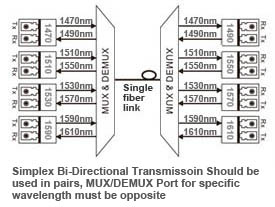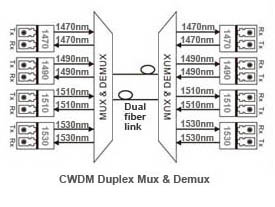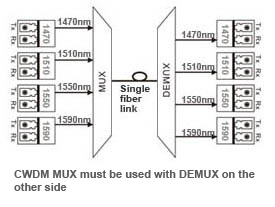The key components in a WDM system are the optical wavelength multiplexer (MUX), and the de-multiplexer (DEMUX). In general, a CWDM (coarse WDM) MUX/DEMUX deals with small numbers of wavelengths, typically eight, but with large spans between wavelengths (spaced typically at around 20nm). A DWDM (dense WDM) MUX/DEMUX deals with narrower wavelength spans (as small as 0.8nm, 0.4nm or even 0.2nm), and can accommodate 40, 80, or even 160 wavelengths.
The one kind of DK Photonics LGX CWDM MUX/DEMUX modules are bi-directional passive optical multiplexers and de-multiplexers, allowing multiple optical signals at different wavelengths to pass through a single optical fiber strand.

The second DK Photonics ABS CWDM MUX/DEMUX modules are duplex fiber link bi-directional multiplexers and de-multiplexers, allowing multiple optical signals’ at different wavelengths to pass through duplex optical fiber.
The last one kind is simplex directional CWDM MUX only or CWDM DEMUX only. The kind of mux and demux must be used with each other.
CWDM MUX/DEMUX solution lets operators make full use of available fiber bandwidth in local loop and enterprise architectures. Our CWDM MUX/DEMUX modules split up to 18 channels (20 nm spaced) to a single fiber. The standard packages are ABS Plastic Box, 19″ Rack Mount Chassis CWDM Mux/Demux and LGX Metal Box Mux/Demux. No matter what kinds of connectors (such as FC, ST, SC, LC, etc.) are all available and we can also mix connectors on one device.
DK Photonics offers a wide range of WDM (Wavelength Division Multiplexing) optical networking products that allow transport of any mix of services from 2Mbps up to 100Gbe over dark fiber and WDM networks providing for the entire set of the most demanding CWDM and DWDM network infrastructure needs.



No comments:
Post a Comment